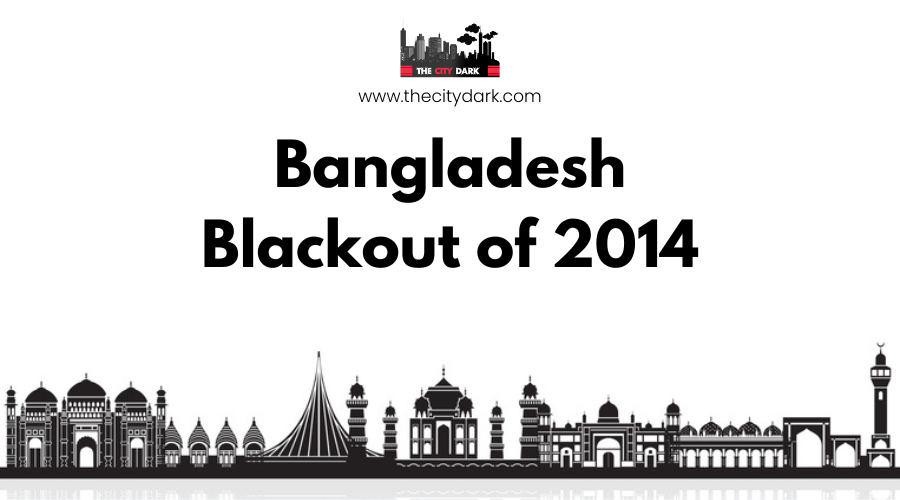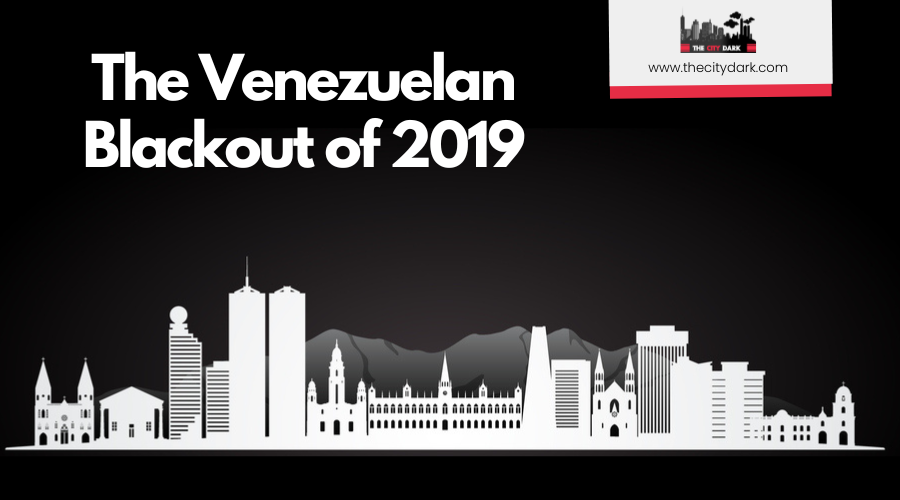Bangladesh Blackout of 2014

Imagine waking up on November 1, 2014, to find nearly 100 million people in Bangladesh plunged into darkness due to a massive blackout. This unprecedented power outage, caused by a failure in a 400 kV transmission line from India, threw major cities like Dhaka and Chittagong into disarray. You'd naturally wonder how such a significant disruption could occur and what the immediate consequences were for the nation. The incident exposed critical vulnerabilities in Bangladesh's energy infrastructure and ignited urgent discussions on necessary upgrades and diversification. So, what exactly went wrong, and how did the government respond?
Overview of the Blackout
On November 1, 2014, Bangladesh experienced a massive nationwide blackout that left approximately 100 million people without power for about 10 hours. This unprecedented outage started at 11:30 AM due to a technical issue in a critical 400 kV transmission line importing electricity from India. The failure in this transmission line caused the national power grid's frequency to drop to 49Hz, leading to widespread power outages.
The blackout originated from a sub-station in Bheramara, resulting in the loss of 445 MW of power and causing the entire national grid to shut down. Consequently, all power plants across the country ceased operations. Major cities including Dhaka, Chittagong, and Sylhet were heavily impacted, facing significant disruptions in services, commerce, and public transportation.
Restoration efforts began later that Saturday night, and by midnight, power availability reached approximately 80%. However, many areas remained without electricity for several more hours, highlighting the extensive impact of the blackout. This event underscored the vulnerability of Bangladesh's power infrastructure and emphasized the critical need for robust and reliable systems to prevent future nationwide outages.
Causes of the Incident
The blackout on November 1, 2014, was primarily caused by the failure of a 400 KV transmission line from India, leading to a significant power loss of 445 MW. This disruption was critical because Bangladesh already faced a generation deficit, and local power plants were operating at full capacity without spare electricity to compensate for the sudden shortfall.
When the transmission line failed, the frequency of the national grid dropped to 49Hz, creating an imbalance between generation and load. The power grid couldn't handle this mismatch, resulting in a complete system collapse. This incident exposed critical vulnerabilities in Bangladesh's infrastructure, particularly at the Bheramara sub-station, which was only equipped to manage up to 400 MW.
The inadequate infrastructure and existing generation deficit made it impossible to stabilize the grid quickly. This event underscored the need for significant upgrades in both local generation capacity and infrastructure. The blackout spurred discussions on better managing power imports and improving the resilience of the national grid to prevent such widespread outages in the future.
Areas Affected
The blackout on November 1, 2014, had a significant impact on both urban and rural areas across Bangladesh. Major cities like Dhaka, Chittagong, and Sylhet experienced severe disruptions, affecting millions of residents and halting business operations. Rural communities also faced substantial challenges due to the widespread power outage.
Major Urban Disruptions
Major urban centers in Bangladesh experienced severe disruptions during the 2014 blackout, with Dhaka, Chittagong, and Sylhet among the hardest hit. The failure of the national grid resulted in widespread power outages, bringing daily life to a standstill. In Dhaka, the capital, the lack of electricity forced many businesses to close, severely affecting commerce and daily routines. Public transportation systems were also disrupted, causing significant delays and making commutes extremely difficult.
Hospitals in these urban areas had to switch to backup generators, which led to critical equipment failures and put patient care at risk. This highlighted the fragility of the emergency power systems and the anxiety of knowing that vital medical treatments could be jeopardized due to unreliable power sources.
The blackout worsened the existing electricity rationing, exacerbating the ongoing energy crisis. Without a stable power supply, urban residents faced increased strain in maintaining their daily activities. The cumulative impact of these disruptions underscored the urgent need for a more robust and reliable national grid to prevent such widespread chaos in the future.
Widespread Rural Impact
On November 1, 2014, a massive blackout plunged numerous towns and rural areas across Bangladesh into darkness, leaving millions without electricity. The impact was felt most acutely in rural regions, where daily life ground to a halt. Already facing electricity rationing, rural households were thrust into darkness for up to 10 hours, exacerbating the existing energy poverty.
Agricultural activities came to a standstill as irrigation systems and essential farming equipment, reliant on a steady electricity supply, became inoperable. This disruption threatened crop yields and the livelihoods of countless farmers. The blackout also forced communities to turn to alternative energy sources, such as diesel generators and candles, further straining limited resources.
Summary of the widespread impact:
| Area | Impact |
|---|---|
| Rural households | Plunged into darkness, worsening energy poverty |
| Agriculture | Irrigation and equipment stopped, threatening crop yields |
| Vital services | Hindered access to healthcare, communication, and daily necessities |
| Alternative energy | Increased demand for diesel generators and candles, straining resources |
The blackout underscored the vulnerability of rural areas to energy disruptions, highlighting the urgent need for more reliable electricity infrastructure.
Immediate Consequences
The blackout that plunged Bangladesh into darkness on November 1, 2014, had immediate and far-reaching consequences. The nationwide power outage brought industrial production to a sudden halt, severely disrupting economic activities. Hospitals had to rely heavily on emergency generators, but many critical machines, such as scanning equipment, remained inoperable.
Long queues formed at gas stations as residents scrambled for diesel to keep their generators running, highlighting the surge in demand for alternative energy sources. Shops and restaurants were forced to close, leading to a notable spike in the prices of candles and kerosene, making everyday items suddenly scarce and expensive.
- Industrial production halted
- Hospitals relied on emergency generators
- Long queues at gas stations
- Increased prices of candles and kerosene
Additionally, many areas experienced severe disruptions in water supply, exacerbating the chaos. Internet and mobile services deteriorated, leaving residents disconnected and frustrated. The blackout exposed vulnerabilities in the power sector, underscoring the extent to which modern life depends on a stable electricity supply.
Impact on Society
When the blackout struck Bangladesh on November 1, 2014, it underscored society's deep reliance on uninterrupted electricity. Approximately 100 million people were left without power for about 10 hours, severely disrupting daily life. Hospitals were among the most affected, relying on backup generators that often failed, leading to critical equipment malfunctions and overwhelming emergency services.
Commercial activities came to a halt. Shops closed due to the power outage, causing a surge in demand for candles and kerosene, essential for lighting and basic energy needs. Public transportation was also severely disrupted, with significant delays and long queues at gas stations as people sought diesel for generators.
The blackout heightened anxiety among residents, who felt particularly vulnerable without electricity. Safety and security concerns surged during the outage, illustrating the societal dependence on a stable power system. This event served as a stark reminder of the crucial role electricity plays in maintaining daily life and ensuring public well-being in Bangladesh.
Technical Explanation
Understanding the societal impact of the blackout provides the context for identifying its technical causes. The Bangladesh Blackout of 2014 was initiated by a malfunction in a 400 KV transmission line from India, which supplied 445 MW of power. This sudden loss of power created a significant generation deficit in Bangladesh's grid infrastructure, causing the system frequency to plummet from 49Hz to 45Hz. This rapid frequency drop triggered a cascade of failures across the national power grid.
Here's a detailed breakdown of the events:
- An electrical surge occurred, incapacitating power plants unable to manage the abrupt loss of load.
- The Bheramara sub-station, designed for a maximum capacity of 400 MW, failed when the load exceeded this limit.
- The absence of modern protective and regulatory devices within the national grid exacerbated the situation, leading to widespread instability.
- Systemic vulnerabilities within the grid infrastructure were exposed, highlighting the urgent need for upgrades and improvements.
The rapid frequency drop and subsequent electrical surge exposed critical weaknesses in the grid's infrastructure. As a result, power plants and substations nationwide were unable to handle the abrupt changes, culminating in a nationwide blackout. This event underscored the necessity of upgrading grid infrastructure to avert similar incidents in the future.
Government Response
During the 2014 Bangladesh blackout, government officials promptly acknowledged the restoration challenges and emphasized the importance of clear communication with the public. The State Minister for Power and Energy transparently addressed the difficulties of the nationwide blackout, ensuring everyone was informed about the ongoing power restoration efforts.
Emergency protocols were immediately activated, ensuring that critical services such as hospitals and airports remained operational. This swift response was crucial in maintaining order and addressing public safety concerns. Security forces were deployed in major cities, including Dhaka, to prevent potential unrest and ensure public safety.
Officials worked tirelessly, and by late Saturday night, power restoration efforts were underway. Remarkably, 80% of the power was restored by midnight, showcasing an effective response. The government also initiated discussions on long-term solutions, highlighting the need for infrastructure improvements and better energy management.
Economic Consequences
The 2014 blackout in Bangladesh had significant economic consequences. Businesses faced substantial revenue losses and had to rely on costly diesel generators, reducing profitability. Retail operations ceased, sharply reducing commercial activity and impacting local economies.
Business Revenue Losses
The 2014 blackout in Bangladesh had a profound impact on business revenue, resulting in an estimated 5.5% annual loss as power outages disrupted operations across various sectors. Retail and industrial activities came to a standstill, causing a severe economic downturn. The outages forced many businesses, especially in the capital, Dhaka, to close early. This blackout exposed the vulnerabilities of energy-poor nations like Bangladesh, where unreliable infrastructure can lead to significant economic setbacks.
The restoration of power to major sectors came too late to mitigate the cascading effects on supply chains and consumer spending. Here's an analysis of the impact:
- Retail closures: Shops and markets lost critical business hours, significantly reducing daily sales.
- Industrial shutdowns: Factories and manufacturing plants halted production, resulting in missed deadlines and supply chain delays.
- Operational costs: Businesses faced additional expenses for alternative power sources.
- Employee productivity: Office closures prevented employees from completing their tasks, further affecting output.
These business revenue losses highlighted the urgent need for infrastructure improvements. The blackout served as a critical reminder that a reliable energy supply is essential for economic stability. Addressing these infrastructure weaknesses is crucial to prevent future economic losses and ensure sustainable growth.
Increased Generator Costs
As businesses grappled with the revenue losses caused by the blackout, they faced another significant challenge: increased generator costs. The massive electricity outage on November 1, 2014, forced many businesses and households in Bangladesh to rely heavily on diesel generators. This reliance led to a significant spike in operational costs, primarily due to high fuel prices and the constant need for generator maintenance.
During the blackout, the demand for diesel surged dramatically, creating long queues at petrol stations and fierce competition for limited supplies. This heightened demand strained fuel availability and drove up costs, making it even more expensive to keep generators running. Consequently, the increased operational costs for businesses were estimated to contribute to a 5.5% annual revenue loss.
Moreover, critical sectors like hospitals and emergency services couldn't afford power interruptions. Their dependency on diesel generators to maintain operations during the blackout exacerbated financial strains on already limited resources. The electricity outage not only increased operational costs for businesses but also put considerable strain on household budgets, as the price of candles and other lighting alternatives skyrocketed.
Disrupted Retail Operations
Retailers across Bangladesh faced a significant disruption on November 1, 2014, due to a nationwide blackout that forced many shops to close. This sudden cessation of operations led to substantial financial losses and had longer-term repercussions:
- Up to 5.5% annual revenue loss: The inability to operate resulted in a notable decline in yearly earnings.
- Increased operational costs: Businesses had to rely on costly diesel generators to maintain essential services.
- Higher demand for alternative lighting solutions: Prices for candles and kerosene surged, reflecting the urgent consumer need.
- Food spoilage: Retailers reliant on refrigeration suffered significant losses from spoiled perishable goods.
The power outage amplified operational costs and exerted additional financial strain on retailers, highlighting the critical need for a reliable power supply to sustain commercial activities. For many, the 2014 blackout was not merely an inconvenience but a financial disaster that underscored the vulnerability of their operations to power disruptions.
Restoration Efforts
Restoration efforts commenced immediately following the Bangladesh blackout of 2014, with technicians urgently working to restart power plants and reestablish the crucial electricity connection with India. The primary challenge was to stabilize the national grid while sequentially bringing each plant back online. It was a critical race against time to minimize the blackout's extensive impact.
By late Saturday night, approximately 80% of the power had been restored. Technicians worked around the clock, activating emergency protocols to prioritize essential services such as hospitals and airports. This swift action was crucial in maintaining vital operations and ensuring public safety during the restoration process.
The Power Grid Company encountered operational challenges but systematically addressed each issue. Their coordinated efforts led to the gradual restoration of electricity to homes, businesses, and public spaces. The relief felt by residents and business owners as lights flickered back on and appliances resumed operation was palpable.
Future Considerations
To prevent future blackouts in Bangladesh, it is essential to upgrade infrastructure and diversify energy sources, including renewables, to enhance security and reduce import dependency. Additionally, implementing robust crisis management plans will enable effective handling of unexpected grid disruptions.
Infrastructure Improvements Needed
Considering the 2014 blackout, it is evident that Bangladesh's electricity infrastructure requires significant upgrades due to outdated technology and insufficient capacity. To prevent future large-scale blackouts, focus on infrastructure improvements that enhance grid stability. Continuous investments are essential to modernize the grid and meet growing demand.
First, prioritize the implementation of modern protective and regulating devices. These improvements can significantly enhance grid stability and prevent cascading failures like those witnessed in 2014. Increasing the availability of hot reserve margins is also crucial to manage power fluctuations and maintain a reliable electricity supply during peak demand periods.
Adopting smart grid technology is another key area. Smart grids enable real-time monitoring and rapid response to grid issues, potentially reducing the frequency and severity of blackouts. Here are the primary areas of focus:
- Implement modern protective and regulating devices.
- Increase hot reserve margins.
- Adopt smart grid technology for real-time monitoring.
- Invest in expanding generation capacity and improving transmission lines.
Energy Source Diversification
Addressing infrastructure improvements is just one piece of the puzzle; diversifying energy sources is equally significant for Bangladesh's future energy security. Prioritizing energy source diversification is crucial to reducing dependency on traditional fossil fuels. By aiming to generate 10% of electricity from renewable energy by 2020 and 20% by 2030, Bangladesh is setting a robust path forward. This includes exploring solar, wind, and natural gas alternatives.
Recognizing the strategic importance of regional cooperation is also essential. Importing electricity from India via the 400-kilovolt transmission line exemplifies how regional partnerships can strengthen energy security. These efforts are vital to meet growing energy demands and prevent future blackouts.
Furthermore, investing in smart grid technology is fundamental. Modernizing the grid with smart technologies and protective devices will help manage power fluctuations and improve the resilience of the energy system. Collaborations with international energy companies will enhance energy infrastructure and expand generation capacity beyond the current 11,500 megawatts.
Crisis Management Plans
Effective crisis management plans are essential for Bangladesh to navigate future power outages. To ensure these plans are effective, it is crucial to focus on several key areas. Implementing modern protective and regulating devices is necessary to maintain grid stability and prevent future blackouts. Equally important is establishing adequate hot reserve margins to manage power fluctuations and ensure reliability during peak demand periods.
Adopting smart grid technology can significantly improve real-time responses to grid issues, enhancing electricity management and reducing outage durations. Continuous investment in and upgrading of existing infrastructure are required to address systemic vulnerabilities and improve the efficiency of power generation and distribution.
In summary, comprehensive crisis management plans should include the following:
- Modern protective and regulating devices: Essential for grid stability.
- Hot reserve margins: Important to handle power fluctuations and peak demands.
- Smart grid technology: Enhances real-time response and electricity management.
- Infrastructure investment: Necessary to address vulnerabilities and improve efficiency.
Additionally, developing emergency protocols for critical services is significant. This will help mitigate the impact of future power outages on public health and safety, ensuring that Bangladesh is better prepared to handle crises effectively.




